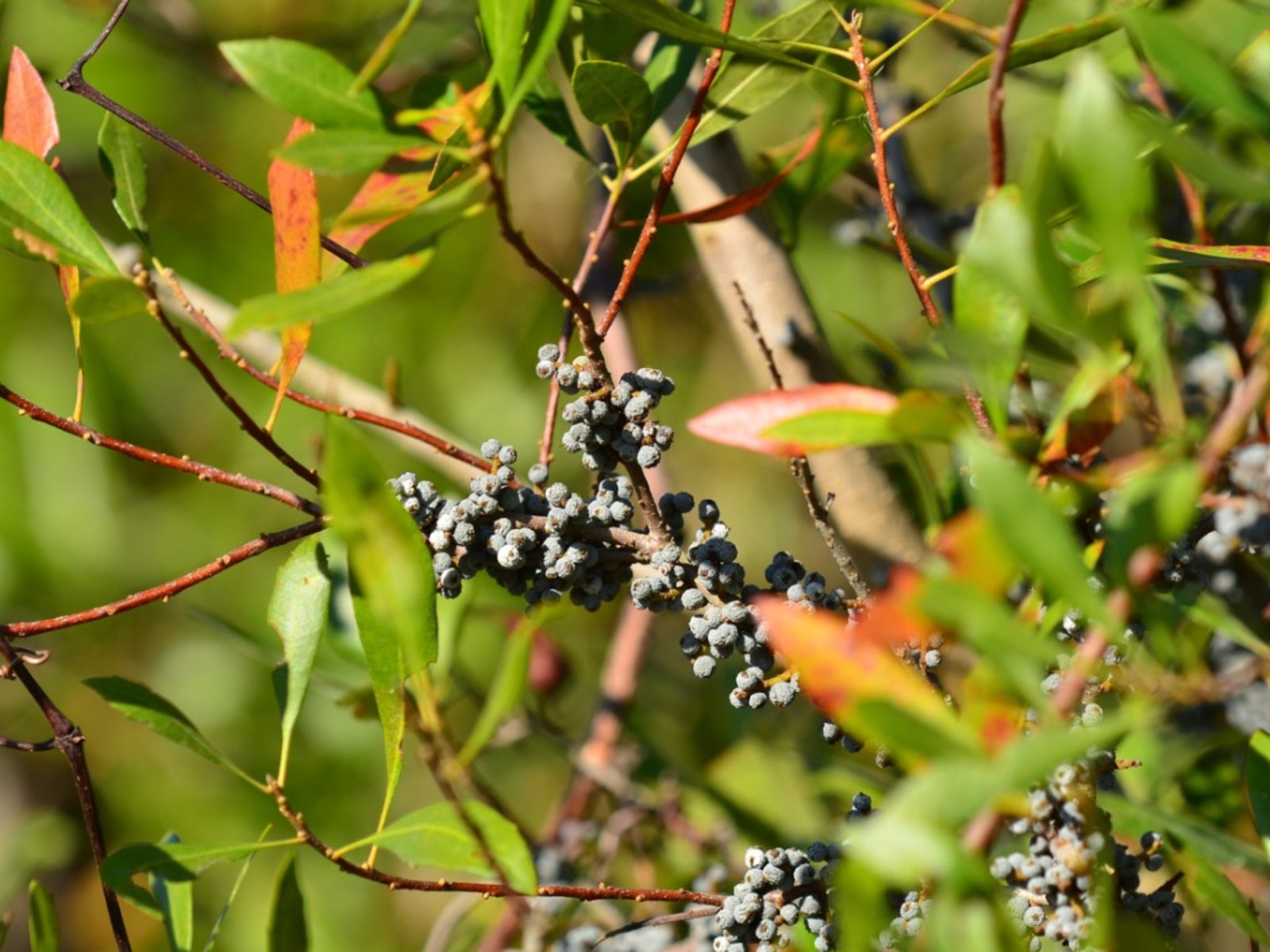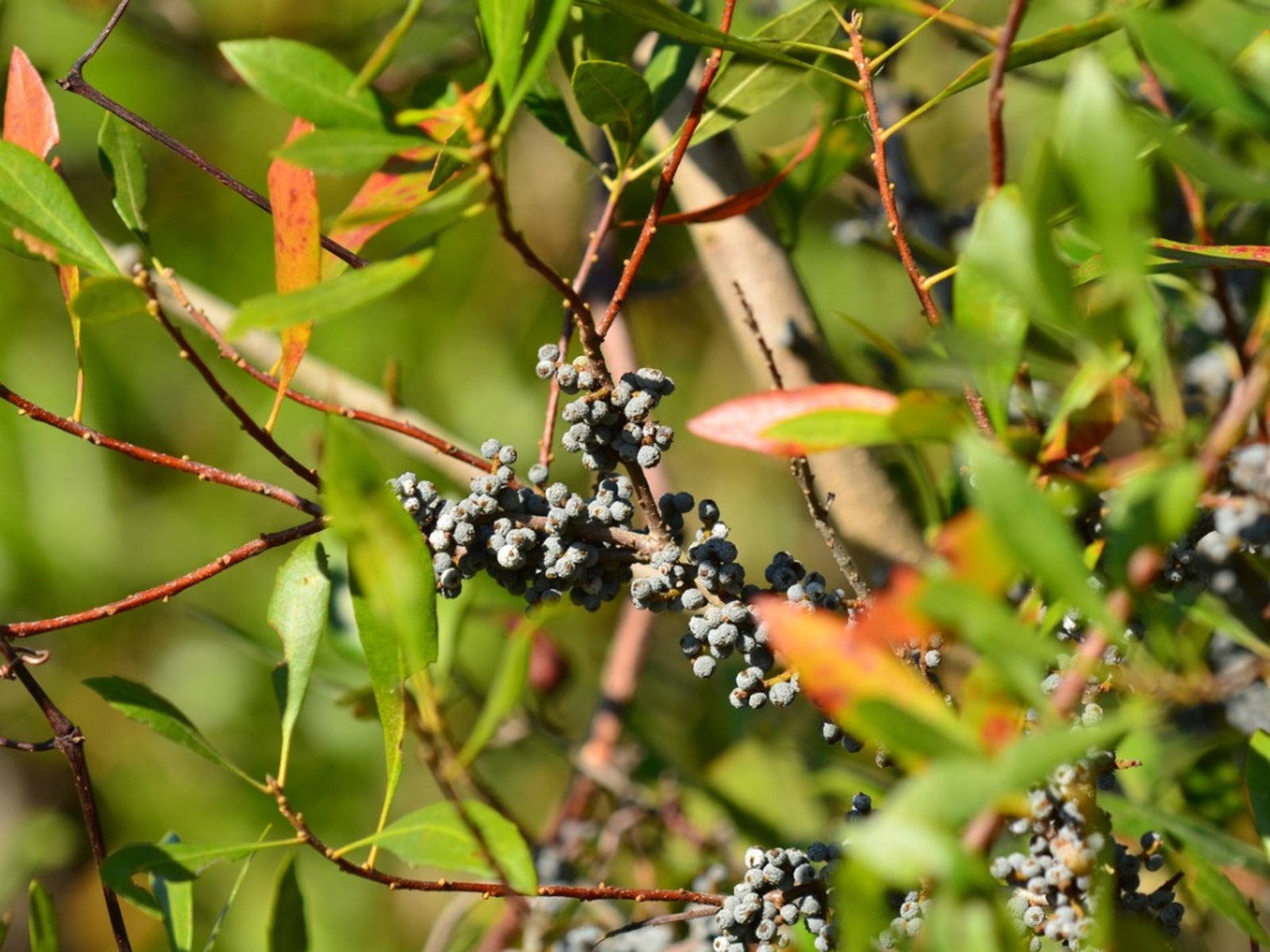Dwarf Wax Myrtle: Tips For Growing Dwarf Myrtle

Dwarf myrtle trees are small evergreen shrubs native to moist or dry sandy areas of pine-hardwoods in East Texas, east to Louisiana, Florida, North Carolina and north to Arkansas and Delaware. They are also referred to as dwarf wax myrtle, dwarf candleberry, bayberry, waxberry, wax myrtle, and dwarf southern wax myrtle and are a member of the family Myricaceae. The plant's hardiness zone is USDA 7.
Difference Between Wax Myrtle and Dwarf Myrtle
Depending on who you talk to, dwarf myrtle is thought to be simply a smaller variety of its common sister species, Morella cerifera, or the common wax myrtle. Apparently, the genus Myrica was split into Morella and Myrica, so wax myrtle is sometimes called Morella cerifera and sometimes called Myrica cerifera. Wax myrtle will generally have larger leaves than the dwarf variety and will attain a height a couple of feet taller (5 to 6) than the dwarf.
Growing Dwarf Wax Myrtle
Valued for its aromatic, evergreen foliage and its 3 to 4 foot (.9 to 1 m.) manageable height, growing dwarf myrtle is also adaptable to full sun or partial shade in a wide range of soils from boggy to arid. The fine wispy foliage of dwarf wax myrtle looks lovely as a pruned hedge or it may be limbed up to form an attractive specimen plant. Dwarf wax myrtle has a stoloniferous root system or spreading habitat (through underground runners) that tends to produce a thicket or dense colony of plants that are useful for erosion management. This thicket-like growth can be curtailed through pruning the plant to contain its spread as part of the care of dwarf myrtle. The leaves of the dwarf wax myrtle are heavily dotted with resin on both the dark green top and the brownish olive undersides, giving it a two-toned appearance. Dwarf wax myrtle is a dioecious plant, which bears silvery blue-grey berries on female plants following the yellow spring/winter blossoms. The new spring growth has a scent akin to bayberry when the foliage is bruised.
Dwarf Myrtle Plant Care
Dwarf myrtle plant care is fairly straightforward when grown in the correct USDA zone, as the plant is highly adaptable to a variety of conditions. Dwarf wax myrtle is susceptible to the cold, especially freezing winds, which will cause leaf drop or severely browned leaves. Branches also become brittle and may split or break under the weight of ice or snow. However, dwarf myrtle plant care and growth is possible in areas of salt spray, which the plant is very tolerant of. Dwarf myrtle plants can be propagated through cuttings.
Gardening tips, videos, info and more delivered right to your inbox!
Sign up for the Gardening Know How newsletter today and receive a free copy of our e-book "How to Grow Delicious Tomatoes".

Amy Grant has been gardening for 30 years and writing for 15. A professional chef and caterer, Amy's area of expertise is culinary gardening.
-
 Try The Trend – Turn Any Bed Into A Keyhole Garden With This Clever In-Ground Composter
Try The Trend – Turn Any Bed Into A Keyhole Garden With This Clever In-Ground ComposterKeyhole gardening is an efficient and sustainable practice that saves space. Get started on this DIY project quickly and easily with an in-ground composter.
By Bonnie L. Grant
-
 4 Superfast Composting Methods: Turn Waste Into Garden Gold In 30 Days Or Less
4 Superfast Composting Methods: Turn Waste Into Garden Gold In 30 Days Or LessTry the fastest composting methods to turbocharge your pile and transform kitchen scraps and garden waste into finished compost in just a few weeks.
By Mary Ellen Ellis
